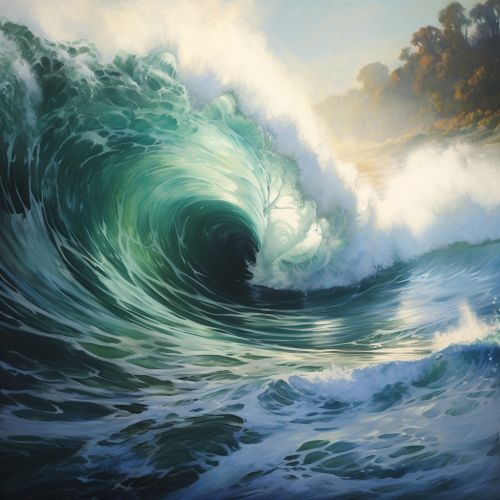The Science of Tsunami Generation and Propagation
Introduction
A tsunami is a series of ocean waves with very long wavelengths (typically hundreds of kilometers) caused by large-scale disturbances of the ocean, such as earthquakes, volcanic eruptions, glacier calvings, and even impacts of large meteorites. Tsunamis are a natural disaster with potentially devastating consequences, and understanding their generation and propagation is crucial for disaster prevention and mitigation.


Generation of Tsunamis
Tsunamis are generated by disturbances that vertically displace the water column in the ocean. The most common cause of tsunamis is seismic activity in the form of undersea earthquakes. When an earthquake occurs beneath the ocean floor, it can cause a displacement of the seabed, which in turn displaces the overlying water column, generating a tsunami.
Seismic Activity
Undersea earthquakes are the result of tectonic plate movements. The Earth's lithosphere is divided into a number of tectonic plates that float on the semi-fluid asthenosphere beneath. When these plates interact at their boundaries, they can cause earthquakes. The most severe undersea earthquakes occur at subduction zones, where one tectonic plate is forced under another.
Tsunami Initial Formation
When an undersea earthquake occurs, it can cause a sudden vertical displacement of the seabed. This displacement can either uplift or downthrust a large volume of water, creating an initial wave at the ocean surface. This wave then spreads out from the earthquake epicenter, forming the tsunami wave train.
Propagation of Tsunamis
Once a tsunami has been generated, it propagates across the ocean. The speed of tsunami propagation is determined by the depth of the water, with tsunamis traveling faster in deeper water. This is described by the formula for the speed of a shallow water wave: v = √(gd), where v is the wave speed, g is the acceleration due to gravity, and d is the water depth.
Deep Ocean Propagation
In the deep ocean, tsunamis can travel at high speeds, often exceeding 500 km/h. Despite their high speed and long wavelength, tsunamis are barely noticeable in the open ocean due to their low wave height (often less than 1 meter).
Coastal Propagation
As a tsunami approaches the coast and enters shallower water, its speed decreases while its wave height increases due to wave shoaling. This can result in a significant increase in wave height, leading to the destructive force that tsunamis are known for.
Tsunami Warning Systems
Given the destructive potential of tsunamis, early warning is crucial for disaster prevention and mitigation. Tsunami warning systems are designed to detect tsunamis in advance and issue warnings to allow people time to seek safety.
Seismic Monitoring
Seismic monitoring stations play a key role in tsunami detection. These stations monitor the Earth's seismic activity and can detect undersea earthquakes that have the potential to generate tsunamis.
Sea Level Monitoring
In addition to seismic monitoring, sea level monitoring is also crucial for tsunami detection. Tide gauges and satellite altimetry can detect the sea level changes caused by a passing tsunami, providing further confirmation of a tsunami event.
